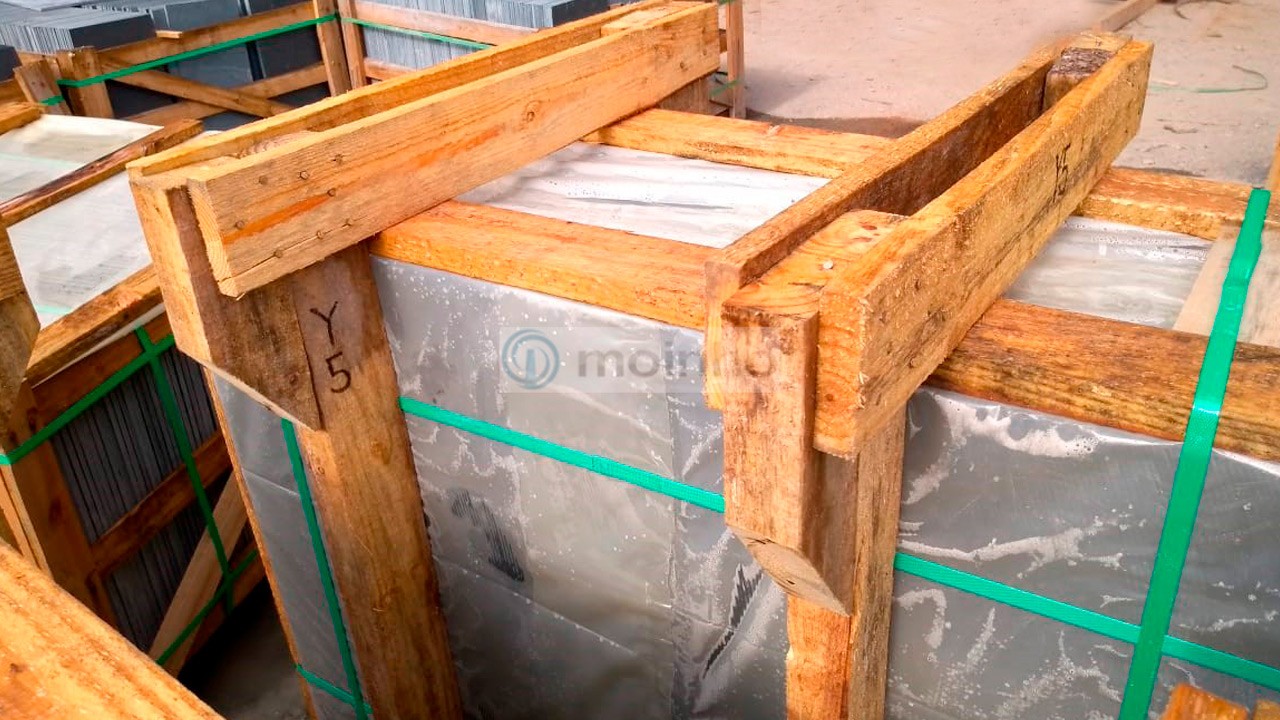The biggest block we can quarry at the Moinho quarrying region we use for Slabs, or Kitchen-Slabs. After opening the layers of Slate, we use the selection for each individual block to check on surface and splittability to see if the blocks are possible to convert into slabs. The most used colour for these slabs is our Black or our most uniform black: Pure Black. The selected blocks have a size of above 2200 x 1200 mm up to lengths of 2900 mm. While splitting the entire surface is meticulously checked on imperfections. After splitting using the natural splitting lines inside the layers of the block, the slabs will have thicknesses of around 2,5 or 3,5 cms. The slabs will then enter the calibration phase in which the back side of the slabs is grinded with a circular diamond disc. This will give the slabs an even thickness of 20 mm or 30 mm.
Final Inspection and Production
The grinding of the slabs with high pressure diamond discs will put a lot of forces into the slabs, any interior damages of the slab will collapse under this strength. If the slab passes the calibration, another inspection is made for imperfections on sides and surface. It is possible to keep the slabs as mostly used with their beautiful natural surface, or as well polish the visible surface for a smooth and honed appearance. The last phase of the production of slabs is the cutting of the sides in straight lines to form slabs of for example 2350 x 1350 mm.
Protection Frame
After these final cuts, the slabs are mounted into a wooden frame with protection on the basis, sides and top with wood. The pressure to tighten the slabs inside the wooden frame is critical for the protection of the slate. Plastic sheets made from reused plastic are applied in between the surfaces of the slabs. Extra wood for protection of corners is applied to the wooden frame. Slabs will be used at the end client to being cut to Countertops, Kitchens, Stairs, Cladding and other uses such as thresholds and window sills.


No responses yet